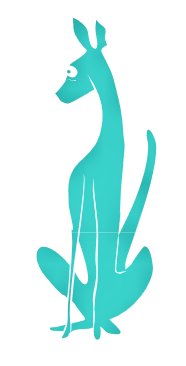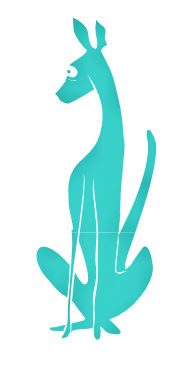
An overview of the importance of research into breed.
Which Breed?
When potential dog owners begin think about taking the step into commitment to dog ownership they usually already have a breed or two in mind, generally these are breeds that the potential owner finds aesthetically pleasing to the eye or that they have had some interaction with historically. This is a good starting point but few potential owners think beyond this in any depth. This can cause long-term problems for the family; a bad owner-dog match is probably the number one cause of behaviour issues and subsequently the vast number of dogs being relinquished to welfare organisations every year.
We, as human nature dictates, tend to look for a dog whilst imagining what the dog can do for us, we usually have a very specific function in mind for the new family member. Some people would like a dog purely for companionship, a small breed that will curl up on the sofa with us while we relax in the evening – this fulfills our need for company. Some potential owners look for an unusual breed that will draw attention and be an excellent conversation starter, the extroverts among us would appreciate this as it would fulfill that part of our outgoing personality. Others will opt for a hypo-allergenic breed that will not aggravate the children's asthma – again fulfilling our requirements on a more practical level. All of these factors are valid and should definitely be taken into account, but many of us fail to consider with any depth what the breed in question requires from us in terms of fulfillment as a dog and as a breed. This choice of breed and individual is the very first step on the road to success or failure! Not merely for the dog, but for the family too.
One example may be the owner seeking companionship, the children have left home, the couple find themselves longing for the role of carer once again so seek out a breed that will fulfill the need for company and care giving. Usually if we approach dog ownership from this perspective we are subconsciously attracted to the breeds that trigger our maternal/paternal instincts so let’s say the owners are attracted to a small breed with large eyes - this naturally mimics the features of a youngster. This sets a physiological chain of emotional response in motion causing us (particularly women) to experience a hormonal influx and strengthens the need for a 'baby' to care for, this is Mother Nature at her most manipulative! The female of the species is genetically pre-programmed to respond to young in this way. The potential owner has already begun to humanise the dog without even realising it. Perhaps the owners becomes set on a toy poodle and looks at some pictures via the internet, and then the next consideration may be availability and price so they do some research. The dogs turn out to be numerous and affordable and the puppies are so cute! Next the potential owners may begin to look into the breed characteristics - but at this point any potential pitfalls are justified due to the power of imagination having already been engaged, when we have an idea in our heads we begin to create a scenario and any possible issues are minimised in the picture that we have created.
Unfortunately for these hypothetical owners, the toy poodle that they collect at eight weeks old is a typical example of the breed and turns out to be very high energy, the owners hadn't really thought the breed through adequately and provide only a quick trot around the block before work. The dog vents his frustration through barking continuously when they are out at work and suffers from extreme separation anxiety being a family breed that values companionship. This anxious state of mind is reinforced and worsened by the 'sofa-cuddles' upon the owners' return. Oh dear. Not only is the dog very unhappy but as the dog begins to struggle with the build-up of frustration he begins to vent this through his special skills, eventually this turns to neurosis and he begins to display pica (the swallowing of items indiscriminately). . . and so it goes on. The owner has what she wanted - a companion to love, however the side effects of this are intolerable with complaints from the neighbours due to the constant barking, excited urination upon her return from work as well as many trips to the vet due to the swallowing of inappropriate items. Life has become very stressful all of a sudden. Due to the Toy Poodle's protective nature the dog may begin to show aggression alongside the uncontrolled excitement that is already present due to his insufficient lifestyle, this makes walking him more of a chore than a pleasure and the walks begin to get shorter and shorter until the owner justifies giving free run of the garden as a suitable alternative to the walk.
Now we have a badly socialised, neurotic insecure dog with separation anxiety. Not only is he miserable, not only is his owner miserable but the dog is now very difficult to re-home. Had the owner opted for a low energy and aloof breed, as well as preparing for the commitment of a moderate walk in the morning before work – the outcome would have been very different indeed.
It is for this reason that researching breeds should be approached with an open mind. The single most important factor is energy level. If you are an active person who enjoys jogging, cycling and hiking you would classify yourself as high energy. However if you like to read and curl up in front of the television, if physical activity is not something that appeals then you would be classified as low energy. If we choose a dog from the breeds that generally have a lower energy level than ourselves then we have taken the first step to a happy match, a tired dog is a happy dog and exercise that is appropriate to the nature of the dog is essential. Next we should consider breed related traits and quirks. We may be very high energy and we may be well able to exercise a dog that requires much exercise but what other considerations should be taken into account? A Siberian Husky for example would be best remaining on a lead or exercised with the use of a scooter or rig, would this be practical? Or would you prefer a dog with the potential of excellent recall and no drive to run? Do you own cats or birds or other small animals? Would you be better looking for a breed renowned for a lack of prey drive? There are many considerations and open-minded research is the most important step, if the breed that you have your heart set on is not perfect for your current lifestyle then ask yourself; are you prepared to make the necessary adjustments to accommodate the breed? What would these adjustments be? Visiting a welfare organisation or accredited breeder that specialises in the breeds that you are interested in would be a very sensible idea as both breeders and volunteers are knowledgeable about the breed as well as being all too familiar with the common reasons for relinquishment. This also gives the potential owner some actual hands on experience with the breed. I have invited many people into my home to meet Huskies for this very purpose, some of these people have left in utter horror at the sheer volume of dog hair during the moulting season! Something that had not really occurred to them until they had visited the home of multiple Huskies – their black clothing now white and furry!
The commitment to owning a dog will last up to 16 years in some cases, when looked at this way few people would argue that a few weeks dedicated to research is excessive. It is important to be honest about our reasons for choosing dog ownership and to be ready to accept any responsibilities that are heightened due to this.
If having researched breed traits and energy levels, and considered the level of commitment required we are still completely set on a breed that requires a shift in lifestyle, then at least we are entering into this with a clear idea of the changes required.
There is always the option of approaching breed specific rescues and joining waiting lists for a suitable individual. Many rescues will be adept at matching a dog to a family in this way, so just because you are hankering after a wildly unsuitable breed, you are still able to limit the lifestyle changes required through selecting an individual that is more suited to your particular circumstances. A good welfare organisation will help you with this.
